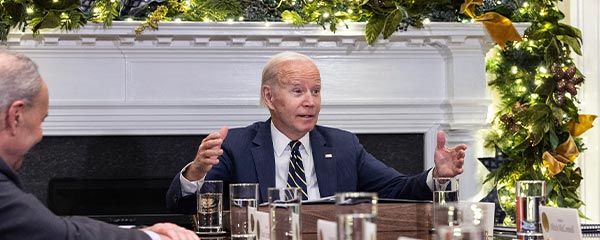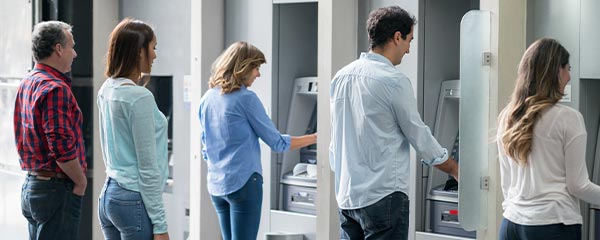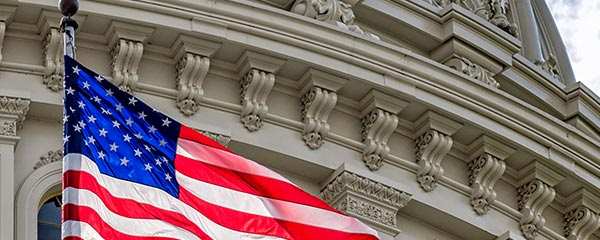Story Highlights
- 42% view Republican Party, 39% view Democratic Party favorably
- Party images have shifted after some past midterm elections
- Federal government leaders viewed unfavorably
WASHINGTON, D.C. -- After the midterm elections that resulted in the Republican Party gaining a narrow majority in the U.S. House of Representatives and the Democratic Party holding on to their slim edge in the U.S. Senate, Americans’ views of the two major parties are essentially unchanged.
Forty-two percent of U.S. adults say they have a favorable opinion of the Republican Party, compared with 44% in September. Meanwhile, the 39% of Americans who view the Democratic Party positively is the same as it was in September. As such, Republicans retain a slight advantage in favorability, a rarity over the past decade.
Americans’ opinions of the two parties remain considerably less positive than they were in the 1990s and early 2000s, when it was common for majorities of Americans to have a favorable opinion of each party. Since 2011, the average favorable ratings are 44% for the Democratic Party and 40% for the Republican Party.
The latest results are based on a Nov. 9-Dec. 2 poll, conducted entirely after voting in the Nov. 8 election. Control of the House and Senate was not known until several days after the election due to delays in counting absentee ballots in many states; however, it was clear on election night that the Republicans’ hoped-for “red wave” would not materialize in either the House or Senate. Ultimately, Republicans led Democrats by about three percentage points in all votes cast nationally for Congress, matching their lead in favorability today.
Party Images Sometimes Change After Elections
In some recent past midterm election years, views of the parties have shifted in reaction to national election results. When this has occurred, it has affected opinions of the Democratic Party only, more often resulting in a decrease in party favorability after a poor showing rather than an increase in party ratings after strong election results.
Specifically:
- Favorable opinions of the Democratic Party fell by 10 points after the 2002 midterm elections. That year, Democrats failed to increase the number of House seats they held, one of the few times in the past century the party not controlling the White House had not done so.
- Democrats lost control of the Senate and Republicans expanded their House majority in the 2014 midterm elections, and Democratic favorable ratings declined by six points. Notably, opinions of the Democratic Party were not affected after the 2010 election, another poor showing for the Democrats.
- The one recent example in which the Democratic Party’s image improved was after the 2006 midterm elections, when it won majorities in both the House and Senate. It was the first time since after the 1992 elections that Democrats held a majority in the House.
Gallup does not have measures for some midterm elections in which views of the GOP may have been influenced by election results. This includes the 2018 midterms, which resulted in the Republican Party losing control of the House of Representatives. Also, Gallup did not measure party favorability before and after historic elections in the 1990s -- including the 1998 elections, when the Republicans failed to gain seats even though a Democratic president was in the White House, and the 1994 midterms, when Republicans won a majority of House seats for the first time in four decades.
Americans More Unfavorable Than Favorable Toward Federal Government Leaders
Just as Americans have more negative than positive opinions of the political parties, they also have more negative than positive opinions of federal government leaders.
President Joe Biden’s ratings are better than the other federal government leaders, with 44% having a favorable opinion of him and 55% an unfavorable one. As is the case with most presidents, Biden’s personal favorability exceeds his 40% job approval rating.
None of the other leaders reach 40% favorability, though all are lesser known than Biden is, ranging from 7% not having an opinion of Speaker of the House Nancy Pelosi to 28% not knowing House Republican Leader Kevin McCarthy well enough to rate him.
Vice President Kamala Harris and most of the congressional leaders have unfavorable ratings that are about 15 points higher than their favorable ratings. Senate Republican Leader Mitch McConnell is the notable exception, with a 21% favorable and 62% unfavorable rating.
McConnell’s image suffers because his fellow Republicans are not particularly warm to him. In fact, more Republicans view the Senate minority leader negatively (54%) than positively (37%). This is in contrast to the other leaders, who are rated positively by solid majorities of their fellow partisans. As recently as February 2020, after the Senate acquitted Donald Trump in his first impeachment trial, 69% of Republicans rated McConnell positively -- but by January 2021, after McConnell acknowledged Biden as the winner of the 2020 presidential election, just 42% did.
Biden has the highest favorability -- 91% -- among supporters of his party. The president also has the highest rating among independents.
Trump Favorability Similar to When He Left Office
The poll also gauged the favorability of former President Trump, who recently announced his 2024 presidential campaign. Thirty-seven percent of U.S. adults have a favorable opinion of Trump, and 60% an unfavorable one. Those numbers are comparable to his ratings when he left office (36% and 63%, respectively), which were the worst favorability ratings of his presidential term. At the time he left office, Trump’s 34% job approval rating was slightly lower than his favorable rating.
Trump had lower favorable ratings than now -- mostly in the low 30% range -- during the 2016 presidential campaign.
Seventy-two percent of Republicans and 32% of independents have a favorable view of Trump, while 95% of Democrats rate Trump unfavorably.
To stay up to date with the latest Gallup News insights and updates, follow us on Twitter.
Learn more about how the Gallup Poll Social Series works.




